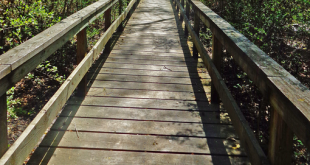Perhaps not ranking in fame with the fountains of Rome or the hanging gardens of Babylon, the museums of the Guadalupe valley are hard to overlook and deserve notice.
As you transit the valley on either main road, you cannot help but notice the many museum signs pointing left and right down a dirt road, leaving you wondering how many are for real when in reality all four are quite accessible.
Reaching the valley from El Tigre Road, you come upon the Bibayoff winery at km 9.5 on spacious and serene Toros Pintos ranch. A new structure houses the latest incarnation of the tasting room and museum which recently celebrated its 100thh anniversary. Through photos, documents, costumes and implements, the museum illustrates the poignant story of the Russian migration to the valley. In the early 1900’s, 104 Russian families of the Molokan faith, escaping the persecution of the tsar, reached the valley by way of Los Angeles. A peace loving, hardworking group, they obtained permission to settle from Porfirio Diaz and purchased 5266 hectares for $48,000 to establish a farm colony. Although they grew table grapes among many other crops, they did not obtain permission to make wine until the 1930’s.
This idyllic state of affairs lasted until the late 50’s when thousands of settlers from Sonora and Sinaloa arrived and all but stole their land and made life impossible. Half of the families migrated back to the Bakersfield area of California. Today, Abel and David Bibayoff are among the remaining families. They cultivate their 80 acres and host events on their land where you can camp and have picnics.
The Samarins, another extant Russian family, make their home on the same road, after crossing El Porvenir. The compound includes the ancestral home, now the museum of family memorabilia, a restaurant where you can sample Russian fare, and a store featuring local products. There is a 20 pesos entrance fee.
Still further, as you enter the village of Francisco Zarco, you come upon a museum sign with the picture of a church. One short block on the right the delightful newer municipal museum appears. Built on the site of the short-lived (1834-1840) Dominican Our Lady of Guadalupe mission, it left intact parts of the original foundations. Displays address mission life, prehistoric conditions, and native people presence.
In sharp contrast, the Museo de la Vid y del Vino at km 81 on Highway 3 (Ensenada-Tecate) is an impressive structure of architectural merit commanding a panoramic view. It was inaugurated in August 2012 amidst much controversy for having cost the taxpayer 76 million pesos, notwithstanding the fact the 2.7 hectares it occupies were donated by Cetto. Exhibits are in Spanish and professionally done. There is an entrance fee. All museums can be viewed in one day, leaving plenty of time for wine tasting.
 Baja Review A community newspaper serving Ensenada, Valle de Guadalupe, and Rosarito in Northern Baja California
Baja Review A community newspaper serving Ensenada, Valle de Guadalupe, and Rosarito in Northern Baja California




